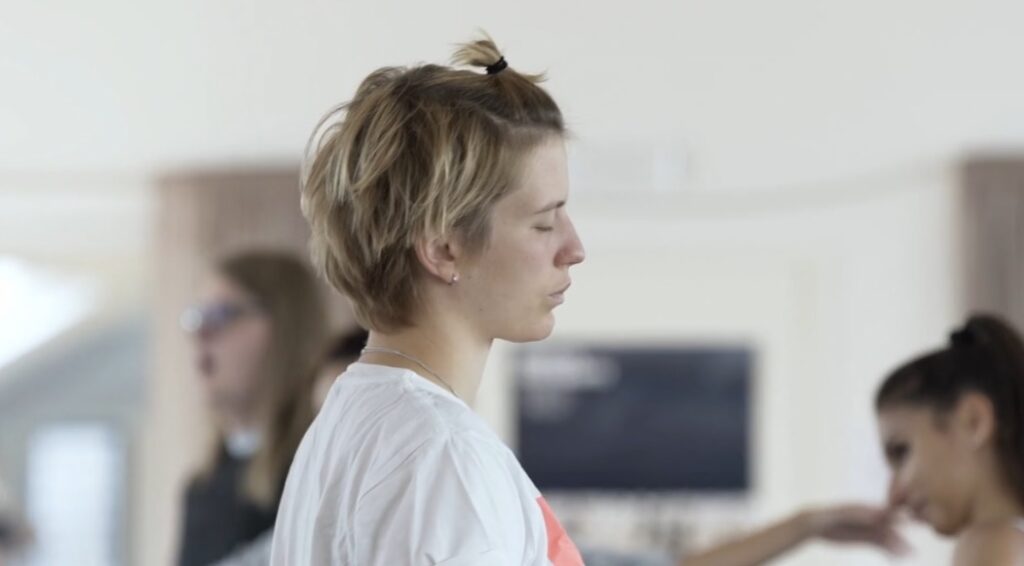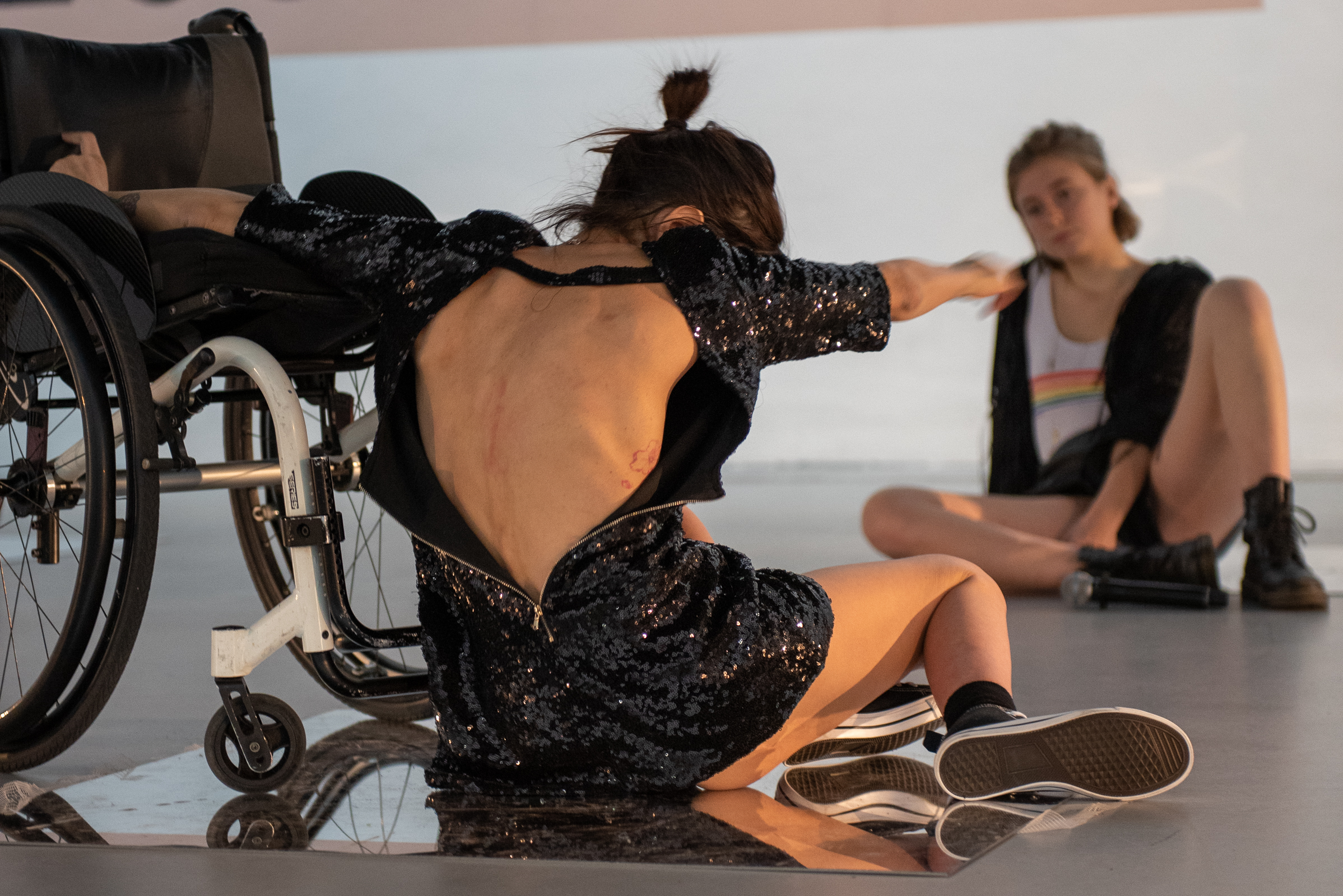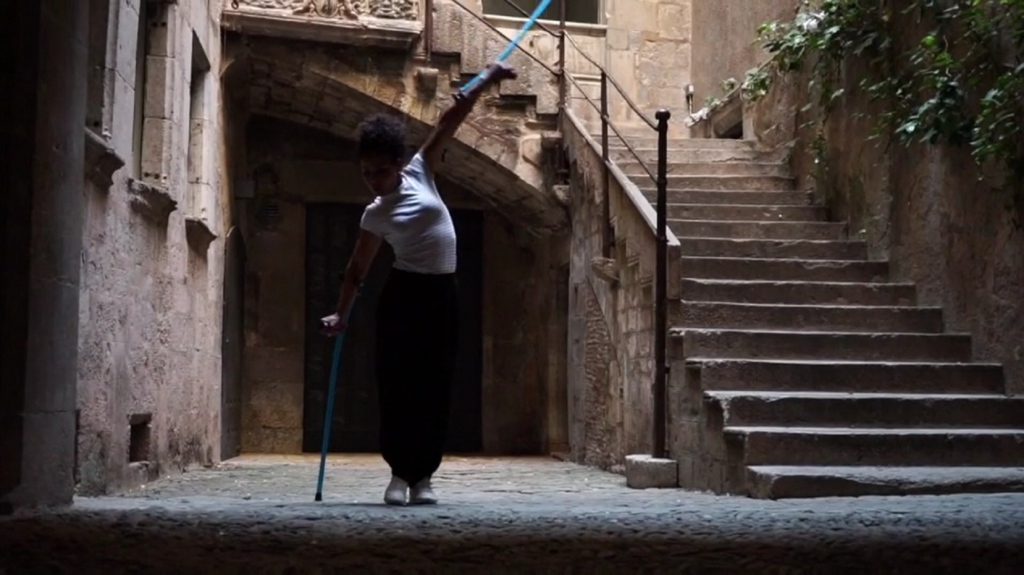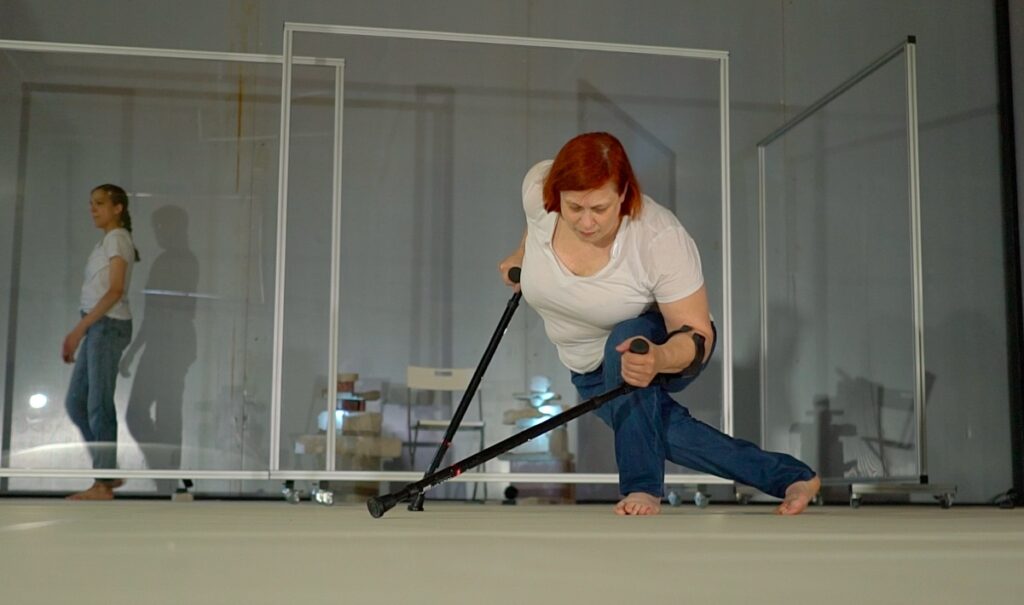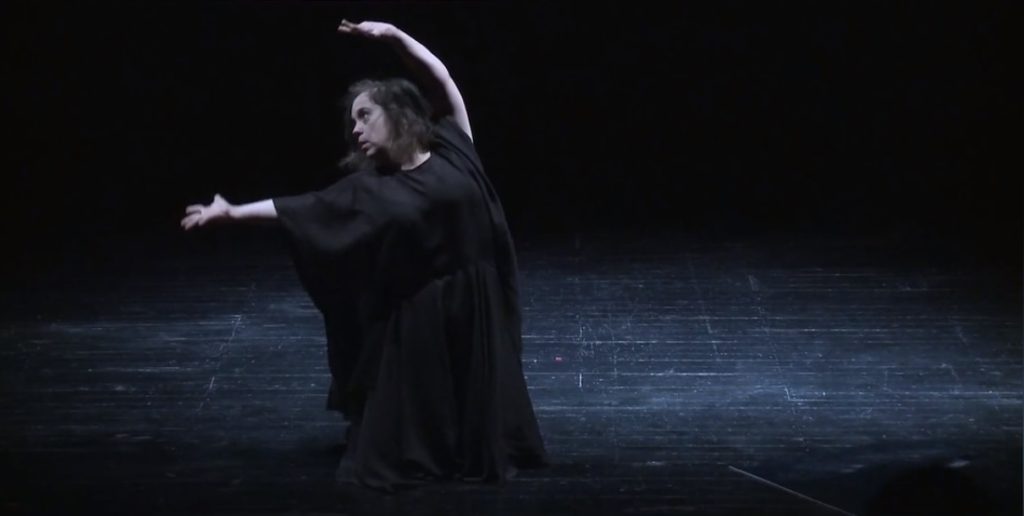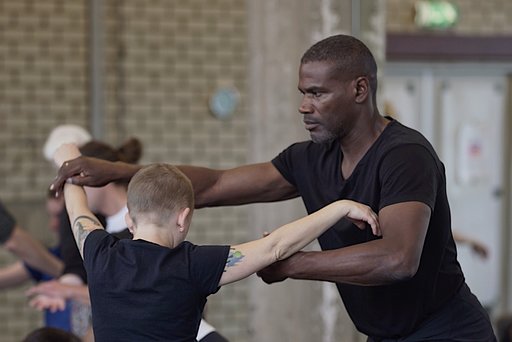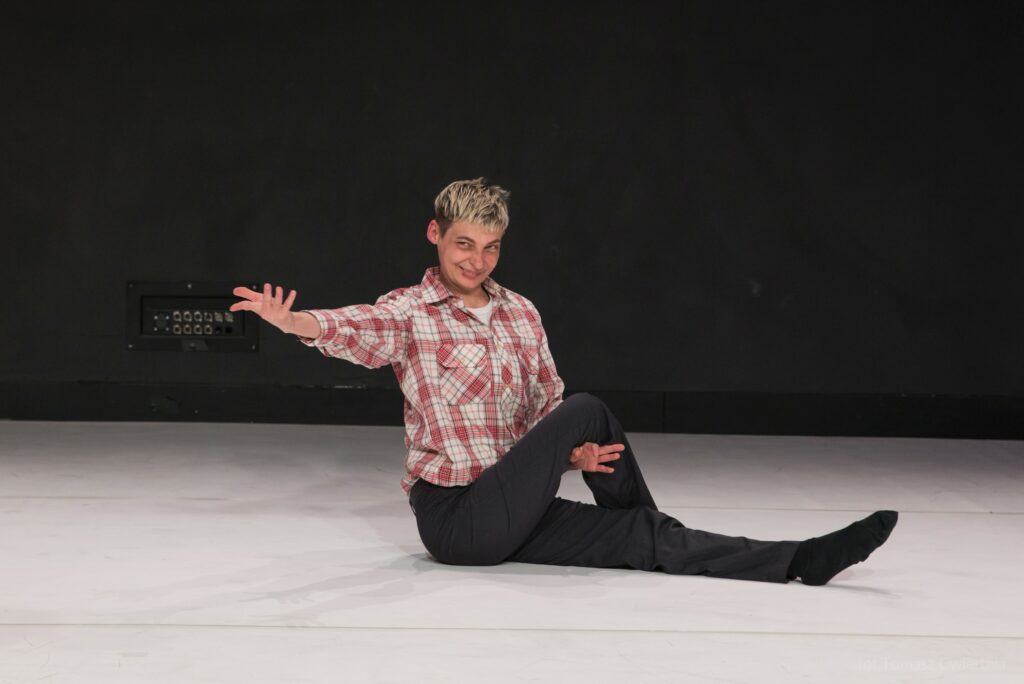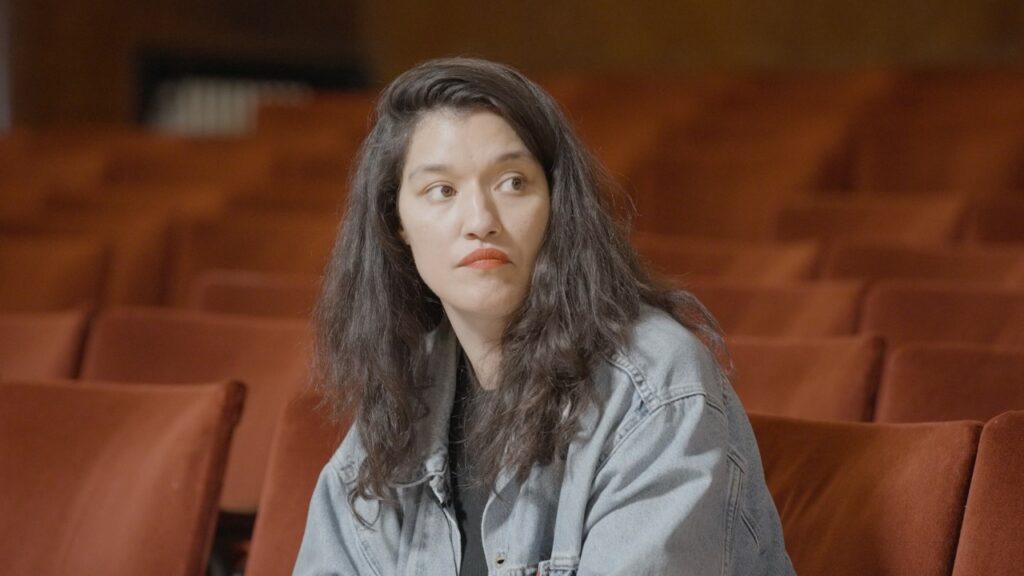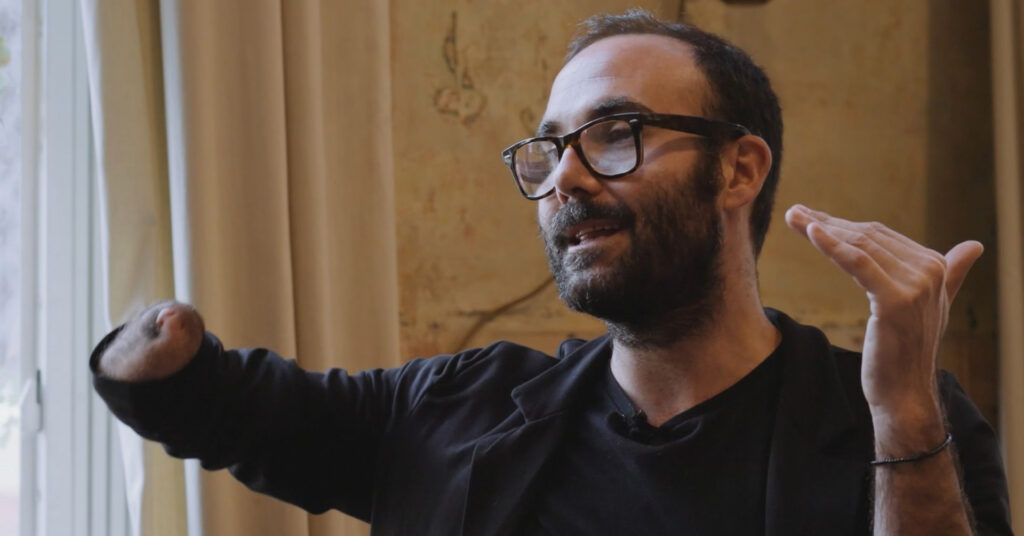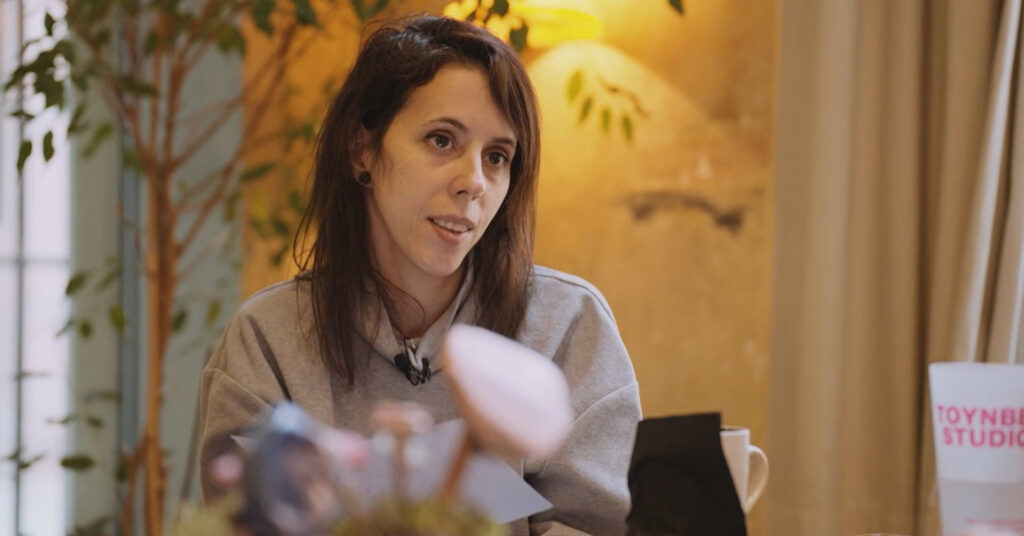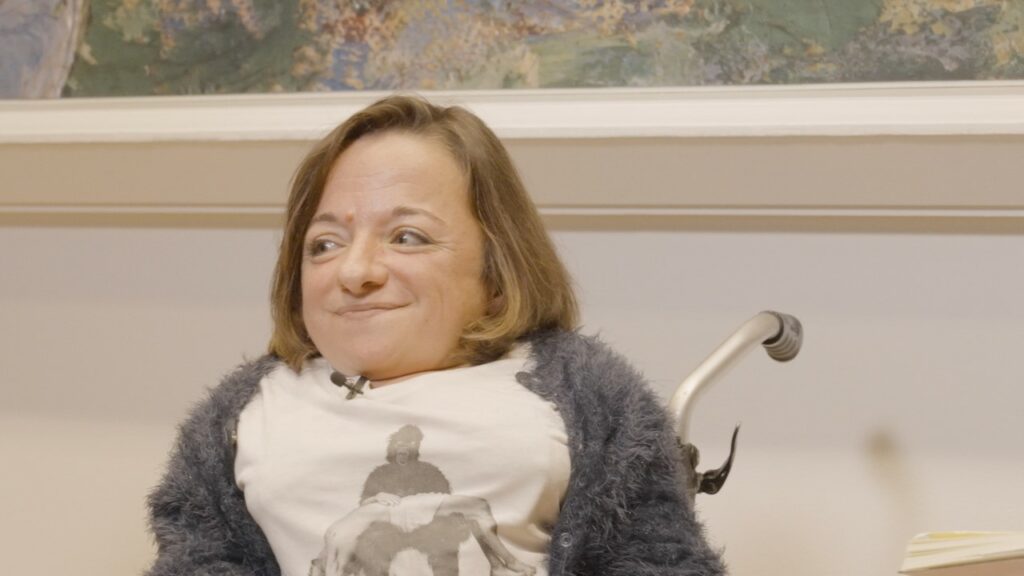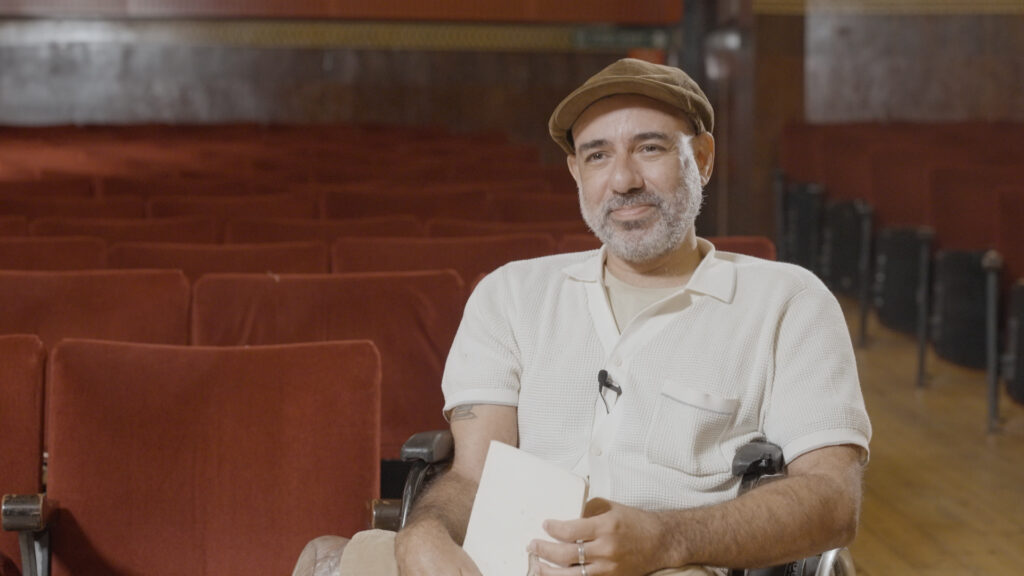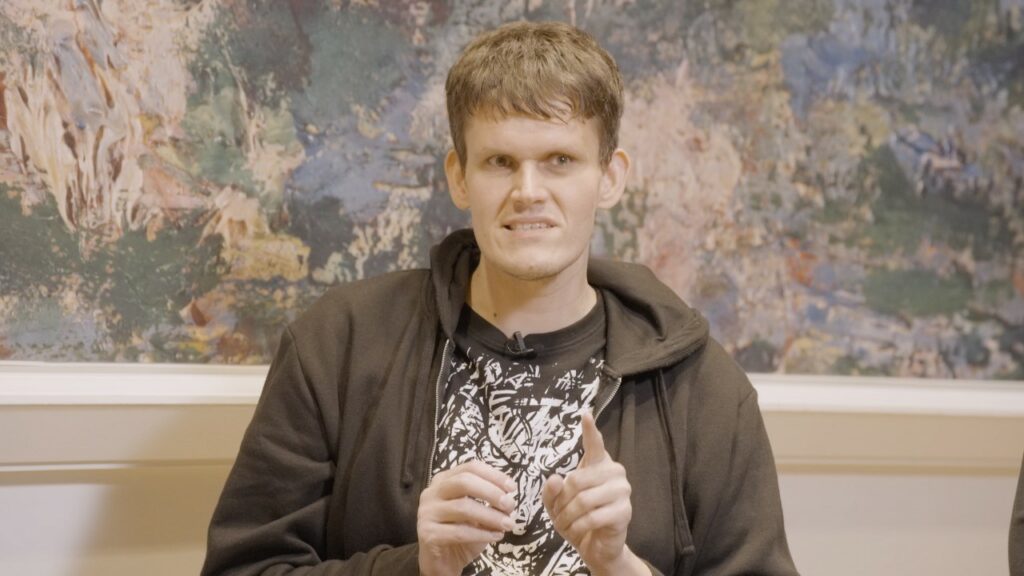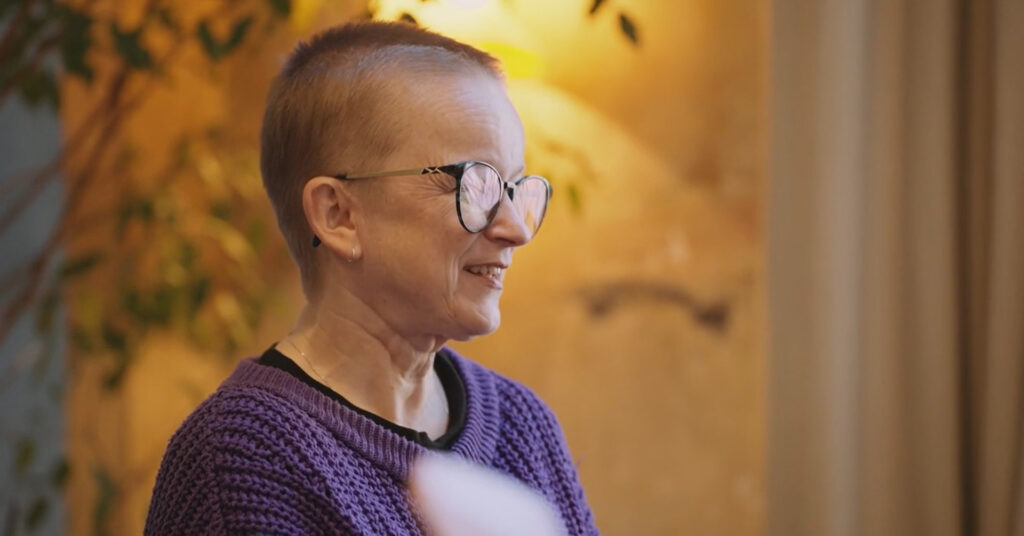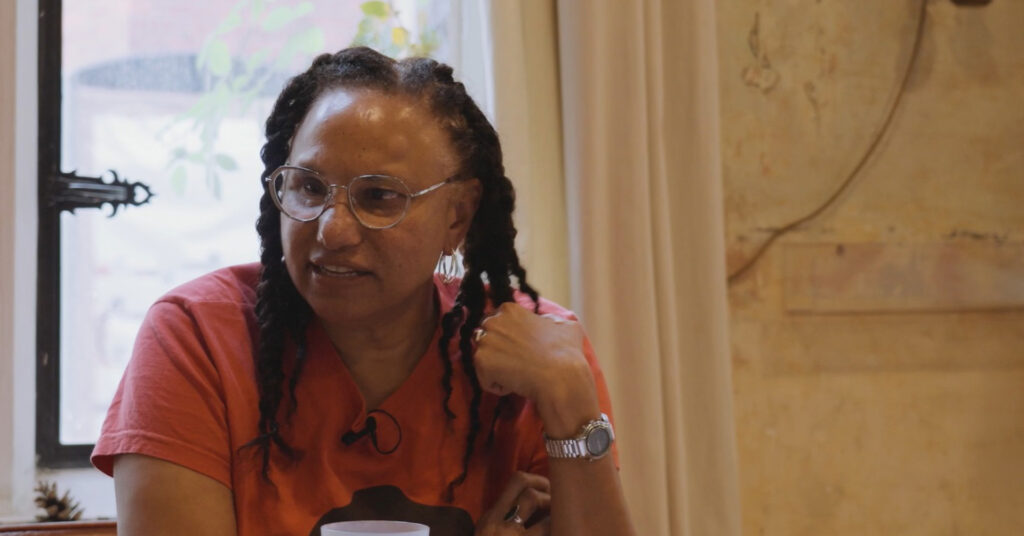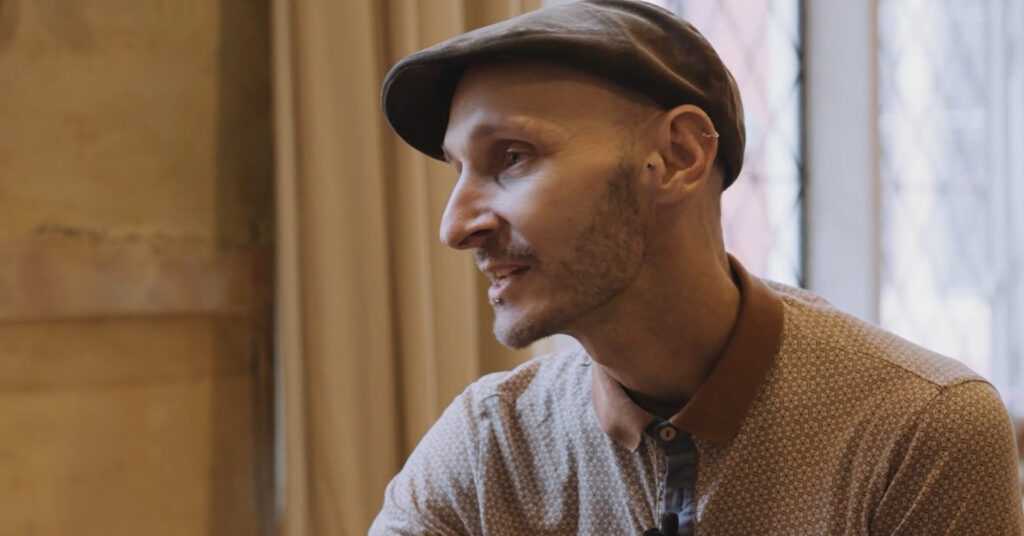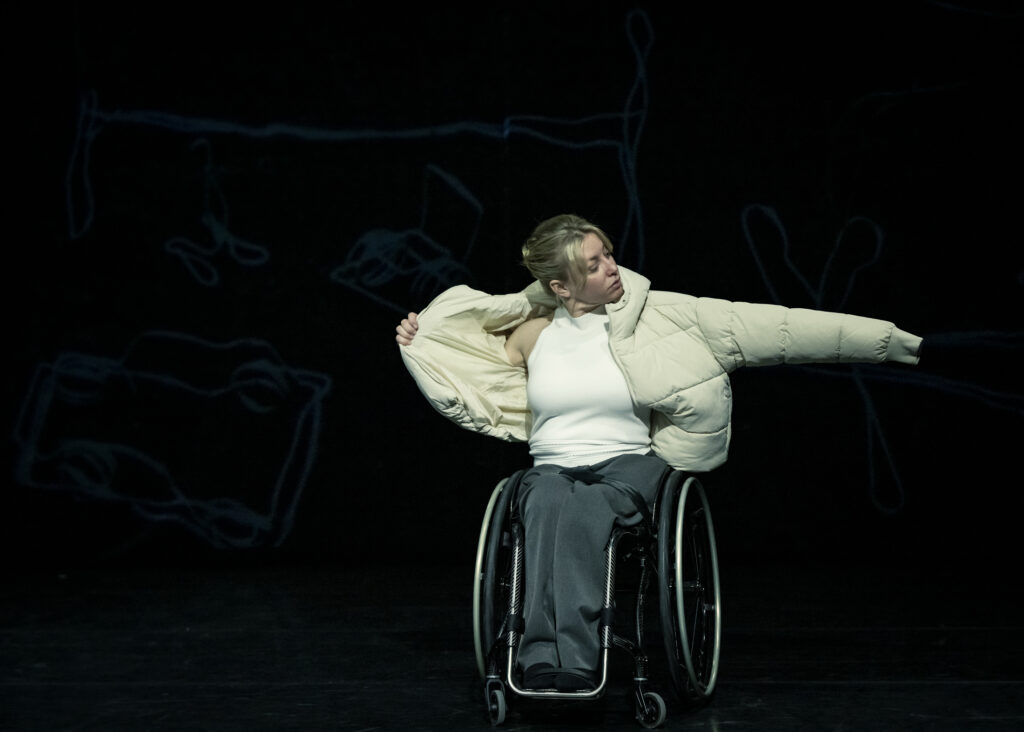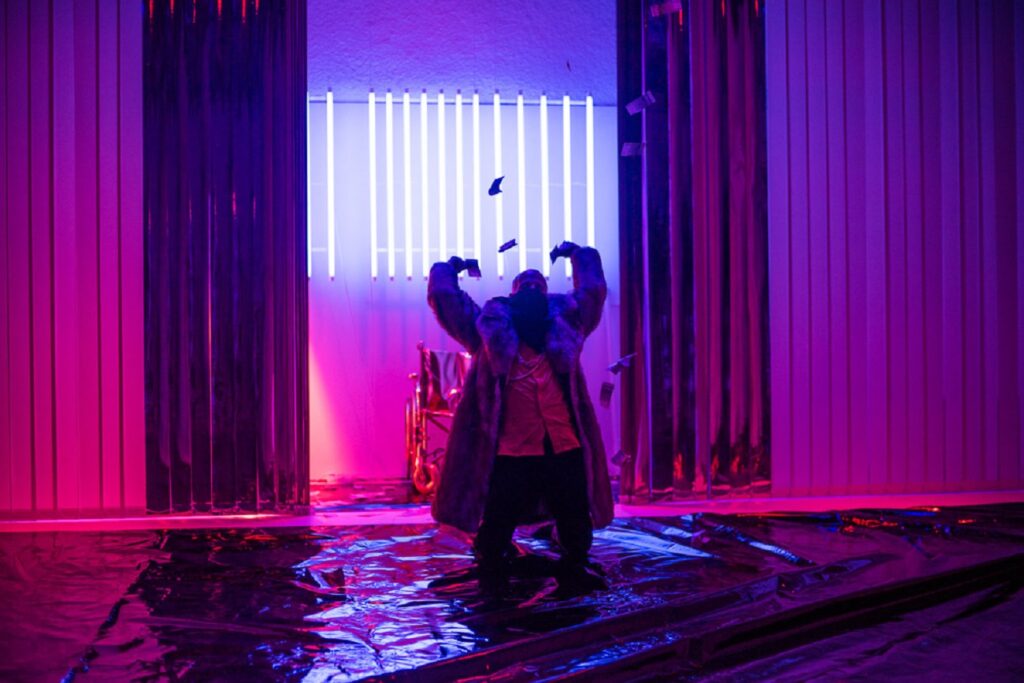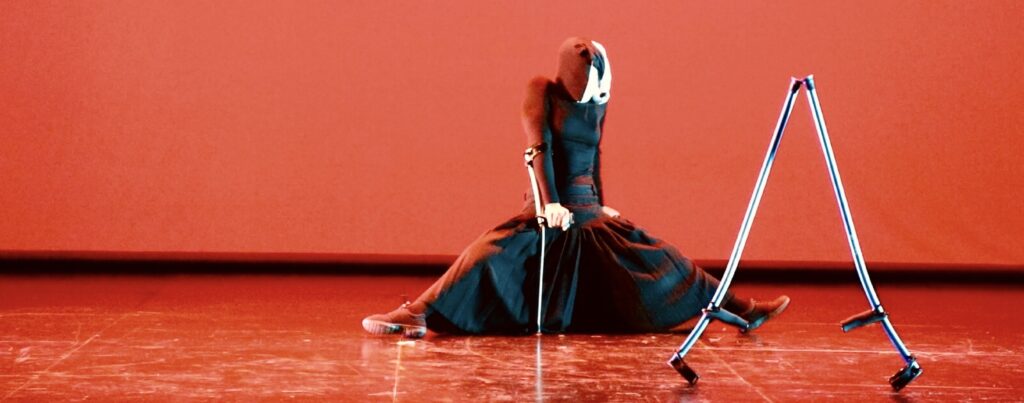
Disabled Artists
Welcome to this Europe Beyond Access “Learning Journey” aimed at Deaf and disabled artists, wherever you may be.
Here the partners of Europe Beyond Access have brought together a range of conversations, provocations, tools and experiences that informed our work and the work of the participating artists on the five-year Europe Beyond Access project. Our aim is to share this material with artists who were not able to be part of our work, and to contribute to a wider exchange of artistic practice amongst Deaf and disabled artists in Europe and beyond.
Deaf and disabled artists, and aspiring artists, are more likely to be geographically isolated from their peers than other, non-disabled colleagues. Your nearest fellow Deaf poet, learning disabled Hip-Hop dancer, integrated dance company or visually impaired theatre-maker may not be in the next town or city, but perhaps in a neighbouring country. And yet, accessible international opportunities for artists to exchange and share are few and far between.
Through this Learning Journey, therefore, we hope to provide a place for artistic practices to be shared, themes to be explored, and information exchanged: a small contribution to peer-to-peer artistic exchange.
Here you will find brand new information made specifically for this toolkit; you will find other conversations and provocations generated during the course of the five-year Europe Beyond Access project; and we have provided links to additional important and interesting content produced by other organisations.
Our films are hosted on Youtube to allow you to benefit from captions and the Youtube auto-translation feature. We provide links to transcripts of the films and audio files to enable you to work with google translate and screen readers.
This Learning Journey is not a complete manual – but, instead, our own subjective selection of tools and practices that we think hope may be beneficial in your work. We hope you find this information useful: use it, question it, improve on it, and help us all move forward on this journey to an equitable cultural sector.
Artists’ Learning Journey in International Sign
Curators’ Messages
(See Filip Pawlak’s curator notes in International Sign here).
Art has always tempted with the dream of potential worlds – stretched out in all times and places. Some of them serve to better understand the past, others look to the future or analyse the present – with fear, hope, sadness or tenderness.
Endless creation driven by sensitivity.
I gave in to this temptation a long time ago. I was looking for a place where I could feel safe – a place where beautiful ideas find their home, and I will be perceived through the prism of my sensitivity, not normativity.
The reality turned out to be more difficult than I expected. For a long time I tried to adapt to the difficult rules of the art world – by cutting myself off from my disability or by proving my usefulness.
The breakthrough came when I started getting to know the art of other disabled artists. I began to find my experiences in them, find a common language, appreciate my unique perspective. I felt part of a larger whole that bravely fights for its pride and shares similar challenges regardless of where it comes from. In this diversity of bodies, languages and sensitivities, I found my place in art again.
I missed this meeting at the very beginning of my artistic path, but it is never too late for it. Learning Journeys is exactly such a meeting. We want to introduce you to extraordinary Deaf / Disabled artists and their diverse career paths, beginnings, work models, reflections, ideas and creation.
I also changed while working on Learning Journeys. From a very practical change – at that time I moved from Poland to Germany and changed my job, to the change of perception and sensitivity that occurred in contact with these materials. For 5 years I have been getting to know new contexts, broadening my experience, filling gaps in knowledge. In Learning Journeys, I try to collect all the thoughts that accompanied me on this road, which is still going on.
So as to let yourself be carried away, find your own way in it or expand your own perspectives.
Filip Pawlak
April 2023, Berlin
The greatest privilege of working on Europe Beyond Access over the last five years has been to experience the artistic works and processes of so many remarkable artists from across Europe and beyond. I truly believe that some of the most radical and innovatory contemporary artistic practices are being developed by Deaf and disabled artists. I hope that some of the tools and ideas in this Learning Journey can support artists who are not fortunate enough to have benefitted from the international exchange of ideas and practices that Europe Beyond Access has offered.
On a personal note, I have learned a huge amount from artists and arts professionals I have met and worked with over the last years. As my own relationship with a chronic health condition has developed, I have been motivated to reconsider my identity as a disabled arts professional: from Kate Marsh I have learned to take more ownership of my disability identity without apology; from Noa Winter and Tanja Erhart I have learned the power of articulating my own access needs; and from Jo Verrent I have learnt how to run major projects remotely, and sometimes from bed!
It seems that no matter where we are in our careers, there is more to learn from other artists and professionals. Hopefully something in here will support you.
Ben Evans
May 2023, London
1. Disability Identity & the Arts
The first chapter of this Learning Journey for Artists begins with a topic that continues to generate a lot of discussion – the relationship between disability / Deaf identity and artistic identity. Do disabled artists need to name ourselves separately? Does this naming restrict us or help us? How can we use the positive dimensions of different identities – not only disabled, but also Queer, Migrant, Black, Indigenous, Person of Colour, Trans, or other identity? Finally – what is the connection between this complex experience of personal identity and the art that we make? These questions are not only personal, but also cultural – with different countries and regions having very different discourses.
In this chapter, we want to share with you some of the contrasting perspectives offered by artists we have worked with on Europe Beyond Access. There is no correct way to consider this question – but sharing our approaches can only contribute to a more informed debate.
In the chapter below, we invite you to listen to two discussion panels devoted to the issue of identity. We will also introduce you to some artists and their methods of creative work that draws inspiration from their own stories and experiences. We also invite you to listen to the conversation regarding acquired disability and to familiarise yourself with external materials that deepen the discussions.
Artistic Identity meets Disability/Deaf Identity transcript
“What does Deaf really mean?” asks Chisato Minamimura in the discussion above – and of course there is no simple answer. We initiated this discussion to highlight a key question – do we need to define ourselves by our disability or Deaf identity in our artistic practice? Both Edu O. and Chisato admit that they treat identities as overlapping layers that are difficult to separate from each other but which do influence each other. Similarly, Aristide Rontini, who points out that identity is one of the tools of his work: “it’s just part of my personality, I use it when it’s more convenient for me”. Chisato Minamimura answers the initial question “I am happy to be unique and this is what I build my art on”.
The question of identity continues in the next discussion, concerning a broader perspective on identity – not only of a disabled artist, but also of being a migrant, a queer person or BIPOC (Black, Indigenous, and People of Colour).
Intersectionality and Artistic Practice transcript
This filmed discussion explores how multiple and complex identities influence artistic practice. The panel includes Brazlilian artist and academic Edu O, Polish dancemaker and activist Katarzyna Żeglicka, UK playwright and Artistic Director Maria Oshodi, and interdisciplinary artist from, Aotearoa (New Zealand), Pelenakeke Brown. “How I define myself and how others define me – which can be completely different things.” sums up Katarzyna Żeglicka in the discussion, while Pelenakeke Brown finds her art in the spaces between identities – especially looking for what connects them, what makes them different and how they meet each other.
What connects the interlocutors of both discussions above is constant self-examination. No wrong answers. It is checking how our own story finds itself in the surrounding society, as well as in direct contact with other people.
What does this examination of identity within artistic practice look like? What does this mean for the creative work? In this short film you can learn about a performance created by Aristide Rontini, in which he describes the “Alexis 2.0” creation process.
Listen to “Europe Beyond Access. Transformation and the body.” on Spreaker.Podcast: Transformation and the Body, with Marc Brew and Diana Niepce.
Marc Brew and Diana Niepce talk about their shared experience of acquiring physical impairment. Both dance artists started their careers with classical dance education, and, at some point in their lives joined a new group – a group of artists with disabilities. How did they find themselves in this new identity and how did it affect their art?
Then Kimberly Harvey will ask you a provocative question – What Do You See When You Look At Me? Kimberley confronts the presumptions and prejudices of the viewer
The chapter ends with the creative showcase of Kasia Żeglicka, who has made activism one of the pillars of her artistic practice.
Kimberley Harvey, ‘What do you see when you look at me?’ transcript
Further reading:
For further reading, we strongly recommend this toolkit from the University of Northern California. The Disability & Libraries Toolkit helps the reader to learn more about disability equity and inclusion, and to understand the needs of disabled people.
Crip Theory
“Crip Theory” is radical approach to disability identity. This short lecture from Robert McRuer is a good introduction.
Disability Justice
This introduction to the term “Disability Justice” is a helpful guide to this framework for thinking about disability which centres the priorities and approaches of those most historically excluded groups.
Art and Activism
This publication from IETM explores the intersection between art and activism, focusing on increasing the political effectiveness of artistic action. Although not focused on the work of disabled artists, the publication does offer interesting reflections on the artists as activist.
For many, this chapter may be a lot.
It seems to me that it can be difficult to accept what is considered an insult in many societies (disabled, crippled, queer…) as something we wear with pride. Isn’t it better to just try to be “normal”? I am not surprised by this temptation.
“Normal” carries security, a promise of peace and equality. Adoption of a “new identity” requires not only energy, but also often courage, and entails consequences that are difficult to predict. As the artists indicate in their statements in the chapter above, the “identity of disability” is at the intersection of many others, often undermining norms and prompting sometimes difficult reflections about: who I am, how others see me, how I feel in my own body, what impact on my life and how do I feel about it? However, it also gives a feeling of regaining strength and value. It also allows you to feel part of a larger community – a group with which we share experiences – good and bad.
However, adopting disability identity can also bring its challenges. With identity comes history, a possibly political position on past and present wrongs, about fighting for one’s (and others’) rights, as well as about the best strategies for a better future. It can bring a complete re-evaluation of one’s own lived experience. This is challenging, and the weight of new knowledge and feelings can be overwhelming.
At the end of the chapter on “identity” I’d like to reinforce what is stated in one of the films by Learning Journeys artists: “find other creators that understand your struggle – surround yourself with communities of Deaf and disables artists” The community of people with disabilities with all its diversity, with its doubts, dreams, demands, pride, fear and courage can be a wonderful way – revolutionary and tender – which we will try to show in the following chapters.
2. Aesthetics and Artistic Approaches
Some of the most radical and innovatory contemporary artistic practices are being developed by Deaf and disabled artists. How are disabled artists challenging traditional art forms and contributing to the avant garde?
When it is still so often wrongly assumed that disabled artists are taking part in therapeutic practices or art therapy, it becomes even more important to explore the radical contribution to professional cultural discourse offered by disabled artists.
Here we start with a conversation about Dance and the artistic contribution and innovation that disabled dancers and choreographers bring to contemporary dance. Then we explore other areas of artistic innovation – a conversation about disabled artists disrupting museums and galleries, Disability Arts practices from outside the European and North American aesthetic, works made by artists with Learning Disabilities, but also a focus on Deaf Culture and accessibility as an artistic practice.
The Importance of Disabled Artists transcript
Contemporary Dance is an art form where disabled artists have been contributing to innovative practices for many years.
In this film, four leading disabled dance artists from across Europe, Artistide Rontini (IT), Diana Niepce (PT), Marc Brew (UK/AUS), and Katarzyna Żeglicka (PL) discuss their innovative approach to dance, in a Europe Beyond Access panel moderated by Freddie Opoku-Addaie, of London’s Dance Umbrella international dance festival.
We are not Monsters transcript
In this short film we see how the Serbian choreographer Dalibor Šandor locates his work, We Are Not Monsters, in context of the traditional art museum. Reflecting on how Learning disabled people are seen within society, Šandor explodes the idea of monstrosity and, at the same time, the boundaries of performance.
Disrupting the Museum transcript
Museums hold a unique place in our culture as the holders of official histories. The absence of disabled people, or our presence only as “freaks” or as “monsters” reinforces and perpetuates the marginalisation and demonisation of disabled people. The lack of a positive (or any) presence there of the history of people with disabilities is increasingly becoming the subject of art. Disabled artists are reclaiming space in museums – a very public reminder of the harmful place of disabled people in our official histories.
Here, Kate Marsh chairs a discussion with three performing artists who have located their works in museums and gallery spaces: Chisato Minamimura, Chiara Bersani and Dalibor Šandor.
Listen to “Europe Beyond Access. Countries and context.” on Spreaker.Podcast: Countries and Context, with Edu O. and Pelenakeke Brown.
The activities of Europe Beyond Access focus on Europe and its diversity, but it is impossible to cut off today’s conversations about art from a broader, global context. We encourage you to listen to the conversation between Edu O and Pelenakeke Brown about a non-European perspective on art and disability.
Disabled Artists in their work expand both the framework of what we most often see on stage – but also regain space for the wider marginalised communities themselves. People who are invisible in society on stage gain hyper visibility. Through their art in the spotlight, they direct social attention to themselves, but also to areas of art or aesthetics that are not in the mainstream of the art sector.
Above you will find a recording of the Artistic Laboratory from Hamburg in which you will learn more about the art of artists with learning disabilities. Then, below, two creative portraits of Diana Niepce and Sophia Neises you will hear about their expanding the field of choreography and dance.
Mindy Drapsa ‘Deaf Culture and Deaf-led Artistic Practices’ transcript
Deaf culture is a unique culture in itself. Here Mindy Drapsa explores a range of different aesthetic, artistic, political, and linguistic practices that contribute to her experience as a Deaf person and Artistic Director.
In this film we hear Artist and activist Tanja Erhart discuss Access not only as a tool or approach to making art accessible, but an aesthetic approach and artistic practice in itself.
Lyn Gardner ‘Arts, Disability and the Role of the Critic and Criticism’ transcript
In this lecture one of the UK’s leading theatre critics, Lyn Gardner, talks about why she thinks the work of disabled artists is some of the most exciting and innovative work being made at the moment. Lyn talks not as a disabled person, but rather as a cultural commentator looking at the work of disabled artists within the wider cultural sector.
Further reading
In this article, Arts and equalities journalist Paul F Cockburn asks how the consideration of accessibility has influenced the aesthetics of disability theatre and performance.
“Otherness” can also be used instrumentally – you can read about the dark sides of objectification in the art of excluded groups on the example of Refugees in this ITEM report.
This report from a meeting of the IETM International network for contemporary performing arts focuses on language as a political and social concept and a backbone of accessibility in the arts, with a particular emphasis on the position of sign languages across the globe.
3. Becoming an artist
In this chapter we want to focus on artistic development, and it is helpful to know the stories of other disabled artists. Because although the artistic path often seems to be lonely – there are many people who share common experiences with us and can give support or inspiration.
Through the materials below we want to bring you closer to the artists of Europe Beyond Access, but we also note that even for these experienced professionals, identifying themselves as an “artist” was not always easy. Undoubtedly, barriers to accessing higher education, architectural exclusion, and lack of accessibility have make it challenging to develop as artists, but nevertheless they succeeded, and have something important to say.
Access to Higher Education transcript
The lack of equal access to artistic education is one of the main obstacles to artistic development – it creates the need for continuous work “around the system”, which Aristide Rontini outlines in this discussion. The common experience of the interviewees is the search for alternative models of education – including those that do not indicate a fully-fledged normative body as the only model to be followed. This is a thread that stands out in the statements of Katarzyna Żeglicka and Chisato Minaminura – a severe lack of representation of people with disabilities among teachers.
Whilst demanding the improvement of the education system (whose problem is not only Ableism…), disabled artists created their own practices of gaining knowledge and experience. You can find their stories related to this and tips in the two videos below.
Tips for Deaf and Disabled Artists transcript
Dozens of artists from different countries and cultures, and at different points in their careers, were involved in the activities of Europe Beyond Access.
Below we present to you five portraits of selected artists that reflect the diversity of the arts and disability sector and show that there is no one perfect way.
Listen to “Europe Beyond Access. Directing and collaborating.” on Spreaker.Podcast: Directing and Collaborating, with Dalibor Šandor and Ben Evans.
In this Audio Discussion, Dalibor Sandor, Serbian Dancer and Choreographer, talks about his work with the Serbian ensemble Per.Art, and his journey from new ensemble member to choreographer.
In previous chapters, we explored the topics of identity and aesthetics, and we presented several artists and their experiences. Now we want to invite you to the dance studio with Sander Verbeek, Pedro Ricardo Henry and Stefan Ernst, who share in this film how artistic and personal identities connect in the making of the work “Momentum”.
“There are 7 million deaf people in the world” – more than the population of many countries. So why is it still so difficult to get equal rights for this group? Barriers in the artistic career are still very visible for the group of Deaf artists – and Silvia Gegenfurtner will talk more about the context of this group in the film below.
Further reading
An IETM publication on Arts & Disability with further contributions from disabled artists as well as a theoretical essay on disability and performing arts, edited by Kate Marsh and Jonathan Burrows.
Holland Dance Festival and Stopgap Dance Company have prepared a full set of videos with sample exercises that you can include in your practice – you can use it if you want to make your dance classes more inclusive.
For those interested in examples from outside Europe, we recommend the British Council’s report on the Arts and disability sector in Thailand and the publication on the Americas (including Latin America).
Becoming an Artist – the title of the chapter prompts me to ask: is there a clear moment when we become artists? Which definition should be used? Will it be the moment when I make a living from art, or maybe the one when I practice at the dance studio on the weekend? Or maybe this title is given only by a diploma of an art school or membership in a relevant trade union?
Perhaps we misnamed this chapter – perhaps it should be called “Courage in Being an Artist in Public.” From the perspective of 4 years in Europe Beyond Access and my own experience, I see that this moment is difficult. Here we can see another area of identity – identifying as an artist. Like disability identity, what it means to be an artist is different for everyone. There is no single criteria, but still requires public coming out. Although it may seem difficult, it finally could gives a lot of satisfaction.
In this and the previous chapter, we wanted to bring you closer to the stories of artists who were looking for their own career paths, their aesthetics and topics that interest them. Take this only as inspiration – your path may be completely different.
4. Developing your Artistic Career
Regardless of whether you want to focus on small focused activities in your art or develop work for large stages with the whole dance company, artistic creation will always rely on teamwork. In this chapter, we give a lot of space for reflection on Leadership – but understood as a responsible process of working with a group and a natural part of the artistic process. As a complement to this team aspect of creative work, we pay attention to international cooperation networks. At a time when it is difficult to find support and understanding at the local and national level, it is international cooperation that becomes an opportunity to develop the careers of artists with disabilities.
For balance, the second part of the chapter consists of individual advice from disabled artists – hints on how to develop their careers, but also a proposal of simple creative tasks based on their artistic practices.
Disabled Leadership transcript
What are the benefits of leadership by artists with disabilities in artistic processes and organisations? In addition to the aspect related to equality and real representation, it also brings reflection on the concept of leadership itself. In this discussion, the conversation explores various types of leadership (of artistic processes, and also of organsiations), but combining in one conclusion – who conducts the project or institutions affects the quality of artistic work, and there is a huge lack of Deaf/ disabled leaders in the cultural sector.
In this film we explore the experience of Learning Disabled choreographers and directors – challenging assumptions in the cultural sector, and bringing different experiences, skills and perspectives to the role of artistic leader.
Listen to “Europe Beyond Access. Leadership and creating space.” on Spreaker.Podcast: Leadership and Creating Space, with Maria Oshodi.
Here the visually impaired playwright and director, Maria Oshodi, talks about her 20 years as Artistic Director of Extant, the UK’s leading professional performing arts company of visually impaired artists.
Many factors can support us at the beginning of our artistic path – good teachers, an inspiring community or committed allies. As a complement to the topic, we also give the floor to the artists themselves, who, in short statements, indicate one thing that had the greatest impact on the development of their careers.
In the following 3-minute short artistic tasks, we want to invite you to practice together with artists associated with Europe Beyond Access. They have prepared for us exemplary exercises that accompany them in their daily creative work, and which you can do at home.
Artist task, podcast with Pelenakeke Brown.
Artist task, podcast with Aristide Rontini.
Artist task, podcast with Diana Niepce.
Artist task, podcast with Chiara Bersani.
Artist task, podcast with Edu O.
Artist task, podcast with Dalibor Sandor.
Artist task, podcast with Katarzyna Żeglicka.
Artist task, podcast with Maria Oshodi.
Artist task, podcast with Marc Brew.
In this film Deaf and disabled artists from across Europe discuss the importance for them of international collaboration and transnational exchange. In a cultural sector with so few artists and companies working in each country or region, international peers become vital.
“Unexpected Bodies in Unexpected Places” was the title of this Artistic Laboratory that toook place in Malmo, Sweden. Led by Caroline Bowditch, the Laboratory explored both the techniques but also the politics of making outdoor and site-responsive works.
Further reading
For further reading we recommend this toolkit published by IETM : An Advocacy Toolkit for arts professionals. Although not aimed at disabled artists, much of the advice is transferable and very relevant.
A frequent theme that accompanies me in my creative work is doubts about the art production system, inseparably related to the question: who sets the rules and makes decisions?
In the statements above, there is a big call for artistic projects to be taken over by artists with disabilities. I agree that the presence of people representing marginalised groups in decision-making bodies is essential – it increases diversity, broadens perspectives, allows for real representation.
However, the trap that awaits there at the same time is the troublesomeness of the entire system of art production.
Changing the system is proving very difficult – especially in a situation where the system lacks time, money or resources. The art machine is constantly running and is reluctant to criticise itself or accept criticism.
The need for changes in the production and circulation system of art (so that it becomes more accessible to disabled artists) also requires the creation of a place for disabled artists at the peaks of the artistic hierarchy – among the curators, creators of cultural policies, institution leaders or significant NGOs.
In my opinion, despite many support declarations, people are reluctant to share the privilege of power. This process takes time and one person cannot change the entire system. That is why it seems to me that it is very important to look for wide alliances – also with other exclusive groups. So as to admonish your rights together and feel more strength and pride.
Perhaps we misnamed this chapter – perhaps it should be called “Courage in Being an Artist in Public.” From the perspective of 4 years in Europe Beyond Access and my own experience, I see that this moment is difficult. Here we can see another area of identity – identifying as an artist. Like disability identity, what it means to be an artist is different for everyone. There is no single criteria, but still requires public coming out. Although it may seem difficult, it finally could gives a lot of satisfaction.
In this and the previous chapter, we wanted to bring you closer to the stories of artists who were looking for their own career paths, their aesthetics and topics that interest them. Take this only as inspiration – your path may be completely different.
5. Tools & Knowledge for Working in the Professional Cultural Sector
Creating art is not only time spent in the studio or on stage – it’s dozens of hours of preparation, talks, tedious planning and writing applications for funding. This is the reality of most artists – regardless of where they come from and what biographies they have. In this chapter we want to focus on this professional layer of artistic work and take a look at everything that happens “behind the scenes”. Below you will find a series of videos and conversations about various aspects of work: working with curators and producers, accessibility, the financing system or the issue of cultural policies.
At the end, however, we encourage you to independently search for the threads that interest you in the set of links to external materials containing a lot of practical knowledge, tips and tools that will help you professionalise your work.
Being a Better Ally transcript
Instigating Changes in Mainstream Dance Programming transcript
Collaboration between artists with disabilities and non-disabled producers, curators or other allies requires sensitive attention. Above, two videos showing it from both perspectives: artist and allies.
If you are ready to start an international career and learn about these aspects of work on your own, we recommend that you check out the list of Festivals focusing on disabled artists, but also a set of practical information on how to prepare for the promotion of your own performance.
Here is a list of Disability Arts Festivals.
Questions about how to take care of one’s own boundaries and how not to reduce the artist to their disability will return on many occasions. Something that builds better cooperation is the awareness of the complexity of these relationships. This is also one of the topics of the following conversations between the artists and their close collaborators.
Artist Chiara Bersani and her non-disabled producer and collaborator Giulia Traversi discuss their working relationship.
Listen to “Europe Beyond Access. Building a team.” on Spreaker.Podcast: Building a team, with Chiara Bersani and Giulia Traversi.
Choreographer Marc Brew discusses his new commission from Dublin Dance Festival with the Festival’s Artistic Director, Jazmin Chiodi.
Listen to “Europe Beyond Access. Commissioning and youth audiences.” on Spreaker.Podcast: Commissioning and Youth Audiences, with Marc Brew and Jazmin Chiodi.
At the end of the chapter, we will focus at the interface between disabled artists and the wider art sector. In the following conversations, the artists and cultural managers share their professional experiences in the field of accessibility, working conditions, dialogue with society but also the financing system.
Dance Artist and Activist Tanja Erhart talks about her demand for access and her role as “Crip Femme Fatale”.
In this provocation disabled artist and research Kate Marsh asks: “who dictates the conditions for artists?” “What if artists made the decisions about the conditions that we practice in? (….) If sufficient funding for access were guaranteed and in place, and we did not need to articulate our access needs in every conversation, in every application? What would this do to the work we make or might make if these things were in place and we were free to just produce and perform our work?
Here artists from Greece explore the challenges experienced in the Greek cultural sector, and imagine a different future.
In this provocation, Nadja Dias, independent dance producer (currently working with Claire Cunningham) reflects on the relationship between artists and presenters, and what role arts funders have to play in overcoming barriers.
Further reading
Access Rider
Very much like a Technical Rider which tells a host venue or festival the things they need to prepare for you as a visiting artist, and Access Rider is something that many artists now have – a description of what the hosts need to do to ensure all your access needs are met, and that you will have a barrier-free experience. A well-prepared Access Rider will save you a lot of stress – Unlimited has prepared a guide on how to create it.
Mobility Funding & Information
On The Move is an organisation specialising in informing about the support of an international career – a database of current information on residencies, funding, financial support in individual countries at this link. On their website you will also find a guide to the first steps in the international sector.
European mobility funding
If you are a European artist looking for financial support to help you with a foreign trip related to artistic work or residency – check out the dedicated funding programme from the European Union – currently the largest European programme devoted to this – Culture Moves Europe. Culture Moves Europe is seeking more applications from Deaf and disabled artists, and you can include additional access costs in your application to ensure your access needs are met.
International Artistic Networks
Support in the beginning of an international career can be found in materials prepared by IETM – the International Network of Performing Arts. You can find their production guide here and here the accessibility manual. Perhaps it will also interest you – an in-depth reflection on inequalities in art at this link. Membership of IETM is also a way of building your international knowledge and network of contacts.
Marketing your work
To professionally prepare your marketing materials, we recommend a guide prepared by Birds of Paradise Theatre. Click here for lots of practical tips.
6. A Community Advocating for Change
In this last chapter, we want to look at the art and disability movement from a wider perspective – as a part of a broader social movement of people with disabilities. Here we explore how our art can support the development of the whole society, changing harmful public policies or undermining existing norms.
We are part of society, and the possibility of equal cultural participation is one of the threads of the struggle for various Disability Rights – there are many such struggles. That is why below you will also find talks about the financing system, capitalism, politics, activism and finally Covid 19.
“I Haven’t Always Been Disabled, But I’ve Always Been An Artist.” – states Diana Niepce in this discussion. Her experience is associated with the main thread of discussion – about how difficult it is to find clear boundaries between art, activism and the politics of bodies. Edu. O is reminding us that we do not have to have the ideal examples of artists changing the world. We may also not be activists, focus only on our own artistic practice. The decision about whether we want to (and when to) be activists – belongs to us.
Here disabled artists talk directly to arts funders – advocating for change.
In this film, a range of disabled artists explore their relationship with political activism, and the inherent political nature of their work as disabled artists foregrounding disabilities in public discourse.
Examples of successful cultural and political advocacy
In this Audio discussion, Diana Niepce and Aristide Rontini discuss their experiences advocating for change in their respective national sectors, Portugal and Italy.
Listen to “Europe Beyond Access. Getting what you need.” on Spreaker.Podcast: Getting what you need, with Diana Niepce and Aristide Rontini.
Disability Arts as a radical intervention in a capitalist cultural economy
And here artists Edu O and Katarzyna Żeglicka explore the role of their art in resisting reactionary power structures in the cultural ecosystem.
Listen to “Europe Beyond Access. Rebel crips.” on Spreaker.Podcast: Rebel Crips, with Edu O. and Katarzyna Żeglicka
The Covid 19 pandemic, we hope, was a unique world event. It had (and continues to have) a profound impact on the cultural sector which we hope is not repeated. But even if that is the case, we all need to understand why the pandemic had a significantly deeper impact on Deaf and disabled artists. In this video disabled Polish performer Katarzyna Żeglicka reflects on how lockdowns made it challenging for artists to continue their creative practice, and how many disabled artists had to focus on maintaining their health over their artistic careers. Deaf performer Sofia Zagka from Greece speaks about increasing isolation when opportunities to meet and socialise with others are reduced. Visually impaired German artist Sophia Neises reflects on how reduced travel inadvertently reduced stress caused by navigating crowded transport systems. Italian Deaf artist Diana Anselmo talks about how communication between Deaf and hearing people shut down when masks were broadly used, cutting off the option to lipread.
Per.Art in-conversation series
By April 2020 the Covid pandemic was already having an alarmingly bad impact on Deaf and disabled artists. Within weeks of lockdowns spreading throughout Europe, Europe Beyond Access partner, Per.Art, hosted a series of conversations with leading disabled artists and disabled-led arts organisations to explore the unequal impact felt by deaf and disabled people and arts professionals.
Whilst so many artists struggled during the pandemic, a group of independent Italian disabled artists used the time afforded by the pandemic to build their advocacy for change in Italy – and to launch the independent association, Al.DI.Qua. After 18 months of working privately they laucnhed their manifesto for change in characteristic style.
The slogan of the social change raised by us at the end of Learning Journeys seems to be obvious in the light of today’s state of knowledge. However, Ableism, like other forms of prejudice, is present everywhere, also in performative arts. Caroline Bowditch powerfully considers the experience of Deaf and disabled people in society and the “ableism” inherent in the cultural sector. Caroline introduces us to the Social Model of Disability, and how thinking about disability from this perspective can support change in the cultural sector.
Caroline Bowditch, ‘Ableism in the Performing Arts’ transcript
In this film, the German curator, producer and activist Noa Winter delivers a provocation to the European cultural sector – and specifically to arts funders and cultural policymakers.
Not every project must end with a great finale – a grand concert, a great spectacle. Sometimes the result can be reflection or a small victory. Kate March in the last material of this chapter will share a story in which, together with a group of disabled artists, they convinced others to change at many levels. In this presentation Marsh talk about her experience of participating in one of Arts Council England’s prominent programmes to support disabled artists – “Changemakers”.
Kate Marsh, Experience of Changemakers programme, transcript
Credits
Film credits
The Europe Beyond Access Learning Journeys have at their heart a series of discussions, debates, provocations, interviews and practical tasks all recorded during an intensive week of content development in London in October 2022. The Learning Journey curators, Filip Pawlak and Ben Evans, would like to thank everyone who contributed to this unique week of exchange of ideas.
Artists
Aristide Rontini (Italy)
Chiara Bersani (Italy)
Chisato Minamimura (Japan / UK )
Dalibor Šandor (Serbia)
Diana Niepce (Portugal)
Edo O. (Brazil)
Katarzyna Żeglicka (Poland)
Kate Marsh (UK)
Marc Brew (UK)
Maria Oshodi (UK)
Pelenakeke Brown (Aotearoa / New Zealand)
Collaborators
Freddie Opoku-Addaie, Bethan Peters and the team from Dance Umbrella – London’s international dance festival
Joseph Kendra and the team at The National Gallery
Tena Busquets from Sismògraf festival
Jazmin Chiodi from Dublin Dance Festival
Markéta Perroud from Tanec Praha
Content makers
The Film-makers Canal 180
The podcast creators Clear Voice Enterprises
Advisor
Joe Turnbull from Disability Arts Online
British Council Team
Katee Woods
Laura Alos
Qais Rahimi


